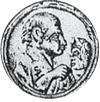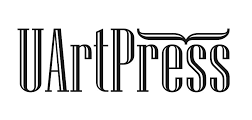Interferența național-universal în sonatele românești pentru pian
Keywords:
sonataAbstract
The National-Universal Interferences in Romanian Piano Sonatas
The pioneers of the Romanian classical music school of composition have their origins in the 19th Century. The folklore was the primary source for their musical themes, which will converge with the Western techniques and musical language. The first Romanian piano sonata dates from this period, but the following works will increase year by year. Thus, in the 20th Century, the composers paid more at-tention to innovating methods and modern details. The most essential Romanian composer of the genre is George Enescu. Due to him, to his contemporaries and the next generations (from the second half of the 20th Century), the Romanian piano sonatas are aligned in the European and universal music tendencies.
References
ABRUDAN, Lucia, 1982. Sonata pentru pian în muzica românească din prima jumătate a secolului XX (teză de doctorat). Cluj Napoca: Conservatorul de muzică „Gheorghe Dima”.
ANGHEL, Irinel, 1997. Orientări, direcţii, curente în muzica românească din a doua jumătate a secolului XX. Bucureşti: Editura Muzicală.
BENTOIU, Pascal, 1984. Capodopere enesciene. Bucureşti: Editura Muzicală.
COSMA, Octavian Lazăr, 1976. Hronicul muzicii româneşti. Bucureşti: Editura Muzicală.
COSMA, Viorel, 1989-2006. Muzicieni din România. Lexicon bibliografic, vol.I-IX. Bucureşti: Editura Muzicală.
GEORGESCU, Corneliu, 1998. Noi tendinţe în muzica românească contemporană. Muzica, nr. 1
GILDER, Eric, 1993. Dictionary of Composers and Their Music. New York: Gramercy
STOIANOV, Carmen şi STOIANOV, Petru, 2005. Istoria muzicii româneşti. Bucureşti: Editura Fundaţiei România de Mâine.
ŢĂRANU, Cornel, 1968. Etape post-enesciene. Cluj Napoca: Conservatorul de muzică „Gheorghe Dima”.
Downloads
Published
How to Cite
Issue
Section
License

This work is licensed under a Creative Commons Attribution 4.0 International License.
CC-BY permits any use, reproduction, distribution, self-archiving and citation of the work as long as the authors are credited. The complete bibliographical data of Symbolon Journal must also be indicated, which you can find in the How to cite section on this page. If possible, please also place a link leading to the original publication.
Copyright of the paper belongs to the author(s).




